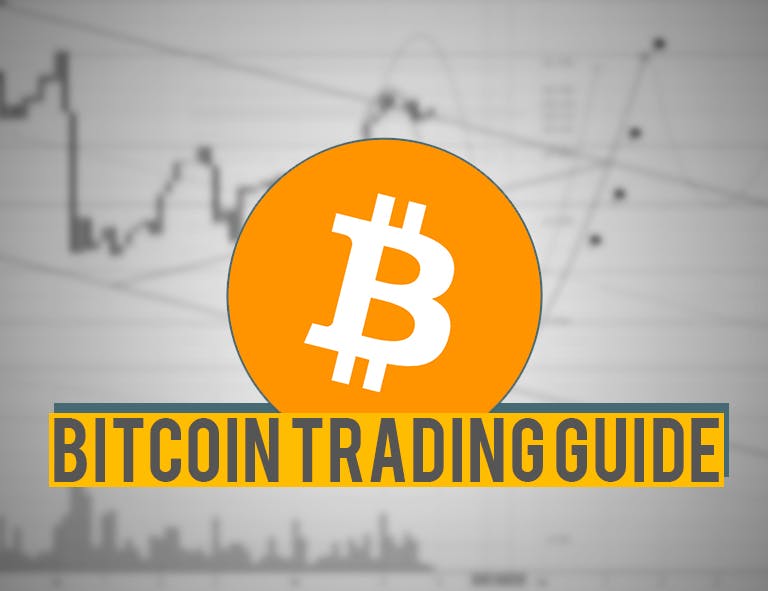
- All
- Tools
- Analytics
- Technical Analysis
- Trading
- Blockchain
- DeFi
- Guides
- Company News
- Educational
- Opinion
- Price Predictions
- Market News
- News
- Trading cases
- Practical guides
- Exchanges
- Trading signals
- Cryptocurrency
- Crypto bots
- Other
Become a crypto master
Learn everything about crypto,
trading and bots

Trading Psychology
- 1. Trading Psychology: Definition
- 2. Basics of Trading Psychology
- 3. Tips to Improve Trading Psychology
- Tip #1: Get in the Right Frame of Mind
- Tip #2: Build Up Your Knowledge
- Tip #3: Imagine Winning & Losing
- Tip #4: Always Remember That You’re Trading With Real Money
- Tip #5: Observe the Habits of Successful Traders
- Tip #6: Practice, Practice, Practice
- Tip #7: Monitor Your Progress
- Tip #8: Stick With Your Trading Plan
- Tip #9: Follow Stock Market Trends
- Tip #10: Use Stop Orders
- Tip #11: Be Disciplined
- 4. Most Common Trading Mistakes
- Mistake #1: Lack of a Trading Plan
- Mistake #2: Over-Leveraging
- Mistake #3: No Time Horizon
- Mistake #4: Minimal Research
- Mistake #5: Bad Risk-to-Reward Ratio
- Mistake #6: Emotional Trading
- Mistake #7: Inconsistent Trading Size
- Mistake #8: Trading on Several Markets
- Mistake #9: Not Reviewing Trades
- Mistake #10: Selecting a Bad Broker
- 5. Manual Trading vs. Automated Trading
- Best Trading Psychology Books
Start Trading on 3Commas Today
Get full access to all 3Commas trading tools with free trial period

In the dynamic world of trading, especially evident in 2023 with its sophisticated markets, two primal emotions often come to the forefront: greed and fear. Greed can entice traders to overstay in a position, hoping to amplify gains just a tad more. Such longing for greater profits sometimes pushes traders into precarious territories. This emotion is particularly rampant during the tail end of bull markets, where speculative actions reach fever pitch.
Conversely, fear stands as greed's antithesis. Under its shadow, traders may prematurely exit positions, hoping to mitigate potential losses. While this cautious approach might sidestep further risks, it also truncates possible sizable gains they might have realized.
Delve deeper below to uncover strategies for effectively navigating these emotional undercurrents in 2023's trading landscape.
1. Trading Psychology: Definition
Trading psychology is the subset of emotions and mental stressors that traders experience. A trader’s mental state can influence their behavior and even affect their level of risk-taking and discipline. Mastering psychological emotions should be an essential component of your overall trading strategy. Without having control over your emotions, it is very unlikely that you could become a master trader.
What Is Emotional Trading?
Emotional trading is when an investor or trader allows their personal emotions and feelings (such as greed and fear) to make an impact on their decision-making process. This can sometimes be helpful, but, in most cases, allowing your decisions to be swayed by emotions is not a wise idea. In the next section of this guide, we will analyze how emotional trading works and what its potential consequences can be.
2. Basics of Trading Psychology
If you don’t have a master over your emotions, you will likely fall into the same cycle of feelings over and over again. Take a look at the chart below, and then we’ll explain each step of the pattern.
Imagine this. You’re going to invest in stocks for the first time ever. You have read about many success stories – perhaps even one of your close friends or family members has made a lot of profit this way. You are feeling very optimistic. After your initial investments, you’re starting to see returns. Wow! You’re so excited – you didn’t realize that you’d start seeing results so quickly. As you become more successful, you feel absolutely thrilled. You are a trading genius! Perhaps you should invest all of your money – and then retire early. All of your decisions have resulted in quick and easy profits. You are totally elated, so you decide to ignore risks – after all, you haven’t failed before.
The market moves against you for the first time in your short trading career. Feelings of anxiety begin to arise in you, but you tell yourself that the market will rebalance. After a while, the markets still haven’t rebounded – but you refuse to accept that you’ve made a poor choice. When you’re in denial, you won’t take responsibility for your poor choices. Next, fear begins to set in. You realize that you’re in trouble, and you become confused by market realities. You start to think that your stocks will never move in your favor.
The market has still not recovered, and you are quickly getting desperate. You start to grasp at straws, trying to come up with ideas to recover your money. Nothing has worked, and you flat-out panic. You have no idea what to do next. You decide that your portfolio will never increase again, so you surrender and sell all of your stocks.
After you’ve exited the markets, you feel numb. You don’t want to buy stocks ever again, for fear of repeating this traumatizing experience. You feel depressed and analyze your actions again and again, trying to figure out where you went wrong. However, after time, you realize that markets do indeed move in cycles. You start to feel hopeful that you could try again and make wiser decisions. Finally, you give it another shot. You buy a stock that turns out to be profitable, and you are very relieved. Perhaps you do have a future in trading after all.
This sounds exhausting, doesn’t it? Do you really want to go through this cycle of emotions every single time you trade? If not, then you should study as much as you can about trading psychology, so you can protect your mental state. To help you with this, we’re going to teach you a bit about FOMO, FUD, Greed, and other traps you should avoid. To put it into context, we’ll provide a real-life example of investing in LTC.
FOMO (Fear of Missing Out)
The root of all trading troubles is the fear of lost profits. When a trader experiences FOMO, they are so eager to make money that they ignore all risks. Don’t turn off your brain just for the sake of making a little bit more money! Perhaps you notice that the price of LTC jumps from $80 to $110 overnight and keeps rising. You want to get in on that action, for fear of missing out on profits.
FUD (Fear, Uncertainty, and Doubt)
After time, FOMO is replaced by FUD – anxious feelings start to set in. Perhaps LTC plunges the day after you buy it. Maybe you even sell immediately because you’re convinced that it’s a bear market and will only drop further.
Waiting
While waiting can be a great investment tactic, some traders wait simply because they are afraid to take actions. This kind of waiting will not do you any good. Let’s say you ended up selling LTC at a low price, but you want to get back in on the action. You wait for the price of LTC to drop down to the price you sold it for, but this could take weeks or months – or perhaps it never happens.
Bear Market
After you’ve waited for a long time, maybe the price of LTC does finally fall back to your selling price. But since there has been a long Bear market period, you decide that this is not the true bottom. You read trading news that there is a collapse, so you hold off on going in. If you choose to pursue such a path, be careful! You might just miss out on the best price you can get.
Greed
Rather than getting in again on LTC while the prices are low, you decide to wait and see if they will drop even more. Rather than waiting due to fear, you are waiting due to greed. Trust us, this can backfire.
Fail
Oh no! Once LTC has reached $60, the prices once more begin to rise. You missed your window of opportunity – its price surges for weeks.
What’s Next?
What happens next in the cycle is totally up to you. You can continue letting your emotions rule your decisions, or you can take a step back and look at everything objectively, realizing that the markets will balance eventually. It can be foolish to hold in or out for too long, if those choices are fueled by fear or greed. But how can you get a grip over your emotions?
3. Tips to Improve Trading Psychology
These tips will help you significantly improve your mindset and safeguard yourself from being led by your emotions. Try them out!
Tip #1: Get in the Right Frame of Mind
Traders can definitely benefit from completing motivating exercises and pep talks on a daily basis. This doesn’t have to be overly complicated – simply reminding yourself that factors such as stock prices are not personal will do.
Another way that you can get into an excellent state of mind for trading is to give yourself more time. Rather than snoozing your alarm and then rushing to prepare before the trading day begins, you should try waking up a little earlier. This will give you the time you need to wake up fully before you begin your research. Starting the day with meditation and exercise can help you approach work with a more relaxed and objective mentality.
Tip #2: Build Up Your Knowledge
One of the most effective ways to improve your trading emotions is to increase your knowledge base. By having a wealth of resources about how trading works, you will be able to make better planned and spontaneous decisions.
Your increased knowledge will allow you to handle any surprises that the market throws your way, so you can react calmly. Strive to learn something new every day – this will add up over time, giving you the ability to make more informed trading decisions.
Tip #3: Imagine Winning & Losing
In order to really check your emotions, you should try this mental exercise: visualize yourself being victorious in a trade. Feels good, right? Do you want to make that feeling a reality? Imagining victory can be a motivating experience, thus prompting you to create an action plan to achieve success.
However, an important part of this exercise is to visualize defeat. Not just a defeat, but the absolute worst-case scenario. This preventative exercise will help you determine proactive steps you can take to avoid such catastrophic outcomes.
Tip #4: Always Remember That You’re Trading With Real Money
Some traders keep cash near their work station – for two main reasons. The first is to motivate themselves towards their ultimate goal: to earn cash. The second reason is to remind themselves what is at stake.
You should always remember while trading that you are dealing with real money, rather than just numbers on a screen. You are risking actual money in the hopes of turning a profit. So, in order to protect your cash, you should be responsible. For instance, complete sufficient research, create a trading plan, and approach trades in an unbiased manner.
Tip #5: Observe the Habits of Successful Traders
You shouldn’t try to copy a successful trader’s habits exactly – you’ll always be a step behind them, so you’ll never have an edge. However, observing successful traders and finding out what positive characteristics they have in common can be a great way to improve your trading outlook. Piece together facets that you admire about several successful traders – this will help you form your own unique trading style.
Tip #6: Practice, Practice, Practice
Almost nobody is great at trading from the very beginning. It takes practice to be able to develop the skills you need for success. Study, hard work, and time will help you become a stronger trader. Practice doesn’t always make perfect, but it will be the best way for you to gain mental strength and to improve your trading psychology.
Tip #7: Monitor Your Progress
Reflect upon your progress as a trader by monitoring, observing, and documenting your actions and their subsequent outcomes. A great way to do this is to write in a trading journal on a daily basis. Whether you are doing it digitally or on physical paper, be sure to keep records of all of your actions. Pay close attention to your successes and see if there is a trend.
Conversely, you should also keep track of losses and see if any of your actions are wasting your time and money. By monitoring your progress, you will gain greater mental clarity with every trade.
Tip #8: Stick With Your Trading Plan
While we’ve already mentioned that it’s a great idea to create a trading plan, there’s another related tip: stick to it! A trading plan is like a roadmap you can use to determine the size of your position, your entry and exit, your risk to reward ratio, and other factors regarding an upcoming trade.
But what’s the point of planning if you are just going to disregard it? A plan can help you mentally prepare for any market surprises. When things shift, refer to your plan – then, when a share’s price reaches your predetermined price points, you know exactly which action to take. Trading plans take the guesswork out of actions, thus providing you with mental security.
Tip #9: Follow Stock Market Trends
Up until this point, we have emphasized the point of making unbiased trades and sticking to a plan. However, it is also important to know when to go with the flow. You can’t simply make the market bend to fit your needs. It has cycles that you need to work around, not vice versa.
Tip #10: Use Stop Orders
By putting stops in place during a trade, you can gain ease of mind. When you place a stop order, you are specifying that you will sell or buy a stock if it reaches a specific price. Once the stop price is reached, the order is executed.
This can help you make a promise to yourself about the point where you’ll exit a trade – and since it is automated, you’ll actually follow through. This is opposed to a mental stop – in which you have to have willpower to stick to your promise.
Tip #11: Be Disciplined
Above all else, you need to have the discipline to assess your emotions and realize when they are leading you astray. If you find yourself being led by intuition or another abstract concept, take the time you need to rebalance yourself. Come back to these tips and read them again, until you become more comfortable with taking an objective approach to the market.
4. Most Common Trading Mistakes
Every trader will make one of these 10 mistakes sooner or later. It’s best to know what they are, so you can be better equipped to deal with them when they arise.
Mistake #1: Lack of a Trading Plan
If you trade without a plan, you won’t have any consistency to your trading strategy. You need to have preset guidelines and set approaches to every trade – by implementing these, you can avoid any irrational decisions. If you delve into trades without a trading plan, you will eventually make mistakes because of unfamiliarity.
Mistake #2: Over-Leveraging
Some brokers offer huge levels of leverage that you really don’t need – for instance, 1:1000. This will put you at huge risk. We recommend sticking with regulated brokers who cap their leverage at more appropriate levels.
Mistake #3: No Time Horizon
Various approaches to trading are aligned with their own time horizons. Therefore, you must do research in order to fully understand the estimated time frame for each trade. For instance, scalpers would target brief time frames – whereas positions traders stick to lengthier time frames.
Mistake #4: Minimal Research
The more time you spend studying the market, the better understanding you’ll have of its product. For instance, Forex traders will learn the subtle differences between various pairs and what those differences mean. Examine every facet of your market, and avoid reacting to baseless advice and media claims.
Mistake #5: Bad Risk-to-Reward Ratio
Traders should keep risk-to-reward ratios in mind in order to properly manage their expectations. After all, the improper management of risks is the top mistake made by traders. Look out for positive risk-to-reward ratios – for instance, a 1:2 risk-to-reward ratio means that the potential for profit is double the potential for loss.
Mistake #6: Emotional Trading
As aforementioned, trading based on emotions can lead to irrational trading and subsequent losses. Be sure to carefully stick to trading plans and make sure that your decisions are devoid of emotions.
Mistake #7: Inconsistent Trading Size
A lot of traders create trades that aren’t suitably proportional to the size of their account. Risks increase and, if something goes wrong, the trader’s account balance could be entirely erased. We recommend only risking up to 2% of your overall account size.
Mistake #8: Trading on Several Markets
While trading on a few markets can give you the experience you need to become proficient, you will have a hard time gaining a deeper understanding of each one. If you want to trade on numerous markets to learn about each one, we recommend doing so on a demo account.
Mistake #9: Not Reviewing Trades
You should use a trading journal frequently. This will help you identify potential flaws in your strategy, as well as to pinpoint what exactly is working. This will boost your overall understanding of your market and the strategy you should implement in the future.
Mistake #10: Selecting a Bad Broker
There are a huge number of brokers readily available, so it can be difficult to choose the right one. You should make sure that a broker is financially stable and regulated before you open an account with them. Such information should be visible on the broker’s site.
5. Manual Trading vs. Automated Trading
Even the best broker eventually succumbs to their emotions, which is why it is always best to use automated tools. Automation sticks to cold, hard numbers and isn’t swayed by intuition or other abstract feelings.
One such automated trading solution is 3commas. When using this platform’s bot for automated trading, you can trade 24 hours per day with technical indicators. You can run a simple bot that runs one trading pair or a composite bot that trades multiple pairs. Also, feel free to set up a short algorithm, a long algorithm, and deal close signals. You can even request for your bots to copy the settings of other successful bots on the platform!
Best Trading Psychology Books
We’ve compiled a list of 5 books about the psychology of trading that everyone should read.
Trading in the Zone by Mark Douglas
Reminiscences of a Stock Operator by Edwin Lefevre
Sway: The Irresistible Pull of Irrational Behaviour by Ori Brafman and Rom Brafman
Market Wizards by Jack Schwager
FAQ
Our 11 tips listed earlier in this guide are excellent ways for any trader to manage their emotion. Remember – practice makes perfect, and a trading strategy certainly helps too.
Review your trades on a regular basis, and be brutally honest with yourself about what is and isn’t working. Do plenty of research on trading strategies, and keep it as objective as possible.
Anybody can be a good trader with enough dedication. When you’re a good trader, you’ll be able to ignore the temptations of greed and fear, and instead stick to your trading strategy.

A proven leader, successful at establishing operational excellence and building high-performance teams with a sharp focus on value creation and customer success.
READ MORE
- 1. Trading Psychology: Definition
- 2. Basics of Trading Psychology
- 3. Tips to Improve Trading Psychology
- Tip #1: Get in the Right Frame of Mind
- Tip #2: Build Up Your Knowledge
- Tip #3: Imagine Winning & Losing
- Tip #4: Always Remember That You’re Trading With Real Money
- Tip #5: Observe the Habits of Successful Traders
- Tip #6: Practice, Practice, Practice
- Tip #7: Monitor Your Progress
- Tip #8: Stick With Your Trading Plan
- Tip #9: Follow Stock Market Trends
- Tip #10: Use Stop Orders
- Tip #11: Be Disciplined
- 4. Most Common Trading Mistakes
- Mistake #1: Lack of a Trading Plan
- Mistake #2: Over-Leveraging
- Mistake #3: No Time Horizon
- Mistake #4: Minimal Research
- Mistake #5: Bad Risk-to-Reward Ratio
- Mistake #6: Emotional Trading
- Mistake #7: Inconsistent Trading Size
- Mistake #8: Trading on Several Markets
- Mistake #9: Not Reviewing Trades
- Mistake #10: Selecting a Bad Broker
- 5. Manual Trading vs. Automated Trading
- Best Trading Psychology Books






